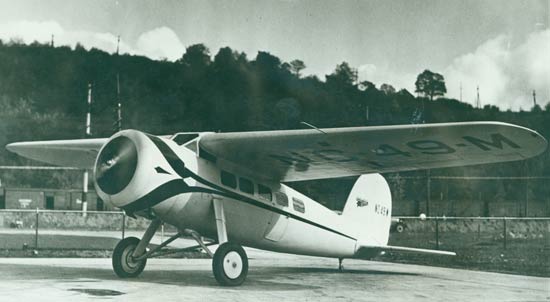Above: A lively party is seen on Briarcliff Mansion’s lawn, with the public pool and pool house in the background.
1930:
Around 1930 Buddie bought controlling interest in West View Cemetery, a massive and well-regarded cemetery in the Southeast. He put family fiends George, Jr., and Forrest Adair in charge initially. He was also building his epic magic collection at this time, and was known to hop in his plane and have his pilot take him to New York to shop for magical apparatuses, simply because he could. At the close of 1930 Buddie was known for three things: magic, air travel, and big real estate. He hosted magic soirees in his third floor ballroom, permitting his guests to select from his collection and perform for each other. Famous magicians such as Howard Thurston and The Great Dante attended his events.
1931:
Then, in January of 1931, his friend, butler and magic assistant José Cruz murdered his girlfriend and committed suicide on Briarcliff grounds. Suddenly headlines didn’t care about anything else. Buddie couldn’t squash the speculation and negative attention as details came to light and rumors spread. More on the José Cruz murder/suicide will appear in a future site update.
He needed a distraction, now that magic was tainted by José’s death. So he turned to flying. In the spring of 1931 Buddie and Florence purchased the same model of aeroplane as Charles Lindbergh and announced intentions to establish a new transcontinental route, one that would beat Lindbergh’s record. The attempt failed due to poor weather and a near crash, but it effectively did what it was intended to do: change the focus to something other than José’s grisly end. He held a few magic events here and there, but this was the last year magic appeared in the public discourse about his life.
At the end of 1931 he bought a bear.
1932:
At the beginning of 1932 he bought an elephant. Just one, perhaps to keep the bear company. Then a few months later Buddie made a decision to open a zoo (secretly a private hunting lodge) on his property. He re-landscaped his front lawn to include concrete enclosures and picnic clearings, then shepherded in a massive menagerie of wild beasts. He opened it to the public for $0.25 admission, but like so many of his big ideas it was doomed from the start. Neighbors filed lawsuits against him and the county started developing a new tax on residential zoos that was intended to target him personally. He spent much of the year putting on events and promoting his zoo while struggling to support it financially.
1933:
By 1933 the zoo was already financially insolvent. He repurposed the aquatic features and opened a public pool. The pool did well but couldn’t offset the expense of the zoo.
During this year he also lost a case against the Shriners in connection to money he owed for the Yaraab Shrine Fox Theater construction. His son John was living it up and drinking heavily, so it was somewhat unsurprising when he crashed his airplane into Idle Hour golf course in Macon, GA. Newspapers erroneously reported this as Asa, Jr.
He was embroiled in too many lawsuits by now. Some were connected to real estate deals. Others were connected to the zoo. His lawyer sued him for back payment for 10 court cases. Money problems became apparent as he sold off his aeroplane and gave away his first elephant, Coca, to the city’s Grant Park Zoo. Similar to the Atlanta Speedway drama of 1910, he impetuously announced that he would close the zoo, then recanted. He claimed publicly that it was going well, while in reality, Dekalb County was pushing through the private zoo tax aimed directly at him and one of the biggest neighborhood lawsuits was going to trial.
He distracted himself from his woes by removing the Adairs from management of West View Cemetery and stepped in to personally manage the property’s growth and development. This enabled him to refocus his energy on creating a clean public image in the noble endeavor of mortuary services.
1934:
This was a rough year. He couldn’t find a buyer for his menagerie at a price that he felt was fair. He was in discussions with the Grant Park Zoo, as well as a potential buyer in New York, but he couldn’t offload the financial burden. Meanwhile the courts handed down a judgement against him, sticking him with the bill for zoo equipment such as picnic tables and other furnishings. The judge denied his claim that the zoo was incorporated, which protected him personally from having to pay. This is a key court finding in his life, because it exhibits some of the legal wrangling that he frequently practiced that enabled him to take huge financial risks without going bankrupt, and it would come back to haunt him later.
In 1934 his daughter Helen Jr. hit a little boy with her car and landed her father in court again when the boy’s family sued for damages. No matter which way Buddie turned, money was a problem. This was in the midst of the Great Depression, so his real estate investments weren’t making the kind of money he was used to. Prohibition had also ended in 1933, which may have impacted him financially. More on booze in a future site update.
1935:
By 1935 Buddie made arrangements to finalize the sale of his menagerie to the Grant Park Zoo, now Zoo Atlanta, for $20k. This was less than his original asking price, and significantly less than what the menagerie had cost him, especially taking zoo operations into account. The remaining animals went to farms and circuses. The largest neighborhood lawsuit made its way up the court system and landed on a judgement against him, forcing him to pay damages for the effects of his zoo on his neighbors.
1936:
Asa, Jr., gifted a loving cup to the St. Andrews Bay Yacht Club outside of Panama City, FL, where he owned a summer home. The cup was a trophy for what would become an annual event called the Candler Regatta, which is still celebrated today. Then a month later his big, expensive yacht Amphitrite burned in a fire. Buddie’s financial demands prior and his return to luxurious living after paint a suspicious picture of the event. More on fires in a future update.
In late 1936 Buddie’s youngest brother William died in an automobile accident. Buddie gave him a special placement in West View Cemetery, not down with their father and extended family, but up the hill closer to his own future plot. William’s grave is unique in the family, set apart in a white marble private mausoleum.
1937-1939
1937 was a quiet year. In 1938 Buddie opened a commercial laundry business, named Briarcliff Laundry, on his property, hoping to bring in new money. It was the largest cleaning and cold storage facility in the Southeast. Once it opened, he offloaded operational responsibility to his sons, John and Samuel, and put every ounce of his energy and every dollar in his portfolio into West View Cemetery. Evidence suggests that the laundry existed to fund his West View Cemetery renovations.
In 1939 he established Thunderbolt Yacht Basin outside of Savannah, GA, and attended the dedication with two new smaller boats that had replaced the palatial Amphitrite. Thunderbolt still exists today.
As the 1930s closed Buddie was hounded by lawsuits and shuffling assets around, even as he shifted his social image from a gadabout of leisure to a man of faith. He focused on community events and church fundraising, but never approached a level of community support that could truly be called philanthropy. By contrast, at this point in his life, Asa, Sr., had donated millions toward education, housing, and social programs. Buddie hosted events, helped with fundraisers, and flew church leaders around the country, but his efforts were more style than substance.
But as he moved into the 1940s his attention narrowed in on what would become his magnum opus, his gift to the city. His whole world and public image became defined by one sole purpose: turning West View Cemetery into the most beautiful memorial park in the nation. It was this singular focus that would carry him to his end.
1930s The Briarcliff Mansion Years pt 2 Gallery
Beeler Blevins’ Hangar at Candler Field
February 14, 1930, The Atlanta Constitution
photo of Asa Jr'.’s Lockheed Vega taken after it was sold to a new owner.
1929 GE NovaLux Submersible Fountain Light, likely the model used in the Briarcliff Pool and later at West View Cemetery, rather than neon as claimed by previous historians.
GE NovaLux Electric Fountains 1934 Brochure
May 4, 1930, The Atlanta Constitution
June 26, 1930, Fort Lauderdale News
July 12, 1931, The MArshall News Messenger
January 19, 1931, The Anniston Star
January 19, 1931, The Baltimore Sun
December 27, 1931, The Atlanta Constitution
May 8, 1932, The Atlanta Constitution
St Andrews Bay Yacht Club Candler Cup
July 19, 1936, The Index Journal Sun
June 3, 1933, The Atlanta Constitution
February 21, 1938, The Atlanta Constitution
The Candler Twins, August 23, 1936, The Atlanta Constitution
July 25, 1939, The Atlanta Constitution





























